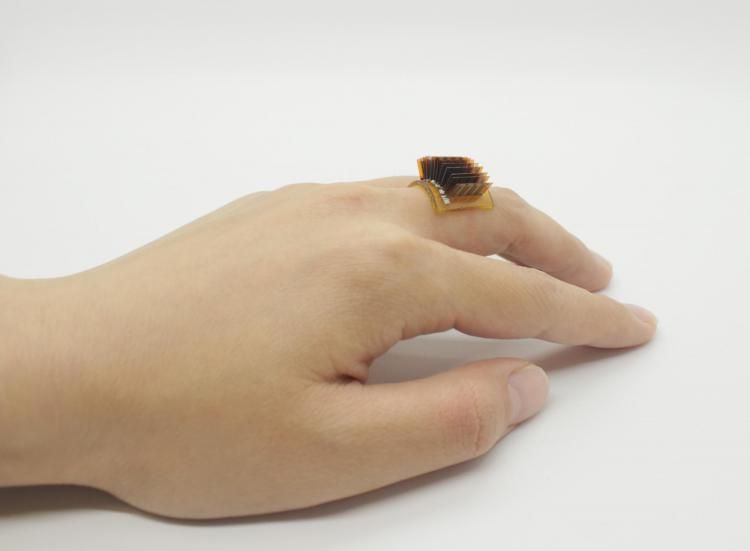Page 6216
On the 12th of January 2021, NASA released the last panorama of Mars captured by the Curiosity Rover near Mount Sharp. This spectacular view presented on the highest quality is a combination of 122 photos.
Days ago, Insight Lander ended Its journey on Mars. In February Perseverance Rover will begin its trip!
Enjoy this mesmerizing view on Mars, with interesting details explained in this video!
Feb 14, 2021
Virgin Galactic will keep its spaceplane for tourists on the ground for now
Posted by Alberto Lao in category: space travel
After an aborted test in December, Richard Branson’s company will try again from New Mexico.
Feb 14, 2021
World’s First EMP Defense Tech For Home Protection
Posted by Heather Blevins in category: habitats
🛡World’s First EMP Defense Technology. Protects Your Entire Home’s Electrical System!
🔥Available to the Public Now!
Feb 14, 2021
Nano Dimension set to lead 3D printed electronics market with AME technology
Posted by Saúl Morales Rodriguéz in categories: electronics, innovation
Since its proprietary technology launched back in 2014, industrial 3D printer OEM Nano Dimension has built a name for itself in the world of additively manufactured electronics (AME).
With ongoing refinements to its flagship DragonFly LDM® 3D printer, the company is now doubling down on its 3D printing of high-performance electronic devices (Hi-PEDs™), an area in which it’s seen significant success in recent years. The Hi-PEDs™ targeted by the company often cannot be produced using traditional printed circuit board (PCB) manufacturing processes.
Yoav Stern, CEO of Nano Dimension, states, “We’re the 3D printing company for customers who need to stay on the cutting edge of electronics design. You’re creating the latest innovations in hardware development and electronic circuits. You need an additive manufacturing solution that allows you to go where no one has gone before in electronics design — and to get there faster and easier than ever before.”
Feb 14, 2021
Researchers use 3D droplet printing to better observe and manipulate bacteria
Posted by Saúl Morales Rodriguéz in category: futurism
Researchers from the University of Oxford have developed a droplet-based 3D printing method capable of customizing bacterial genotypes at the micron-scale, which could drive major shifts in ecology.
Using droplet printing, the researchers were able to print strains of the gut bacterium Escherichia coli, also known as E. coli, and alter its spacing to create customized communities of the bacteria in order to see how strains react to each other when placed side-by-side in specific patterns.
Being able to manipulate the arrangement of such bacteria at the micron-scale enables greater observation and understanding of its behavior, and could even be “critical for ecological outcomes”, the researchers claim.
Feb 14, 2021
US Navy Research Lab engineers 3D print functional lightweight cylindrical antenna arrays
Posted by Saúl Morales Rodriguéz in categories: 3D printing, military
Engineers at the US Navy Research Laboratory (NRL) have deployed a 3D printer to fabricate optimized antenna components that could be key to advancing the US Navy’s radar monitoring capabilities.
Utilizing 3D printing, the engineers were able to create cylindrical arrays at a lower cost and with reduced lead times compared to those incurred using conventional specialized equipment. The resulting parts also proved to be significantly lighter than previous iterations, potentially lending them new end-use navigational or defense applications.
“3D printing is a way to produce rapid prototypes and get through multiple design iterations very quickly, with minimal cost,” said NRL electrical engineer Anna Stumme. “The light weight of the printed parts also allows us to take technology to new applications, where the heavy weight of solid metal parts used to restrict us.”
Feb 14, 2021
New wearable device turns the body into a battery
Posted by Saúl Morales Rodriguéz in categories: energy, wearables

A team of engineers has developed a new device that you can wear like a ring or bracelet and that harvests energy from your own body heat.
Feb 13, 2021
‘Farfarout’: Scientists find the solar system’s most distant planetoid
Posted by Quinn Sena in category: space

Pluto, the dwarf planet, resides around 3.1 billion miles from the Sun, while Farfarout is an incredible 12.2 billion miles from the Sun.
Feb 13, 2021
New machine learning theory raises questions about nature of science
Posted by Saúl Morales Rodriguéz in categories: information science, robotics/AI, science, space
A novel computer algorithm, or set of rules, that accurately predicts the orbits of planets in the solar system could be adapted to better predict and control the behavior of the plasma that fuels fusion facilities designed to harvest on Earth the fusion energy that powers the sun and stars.
















